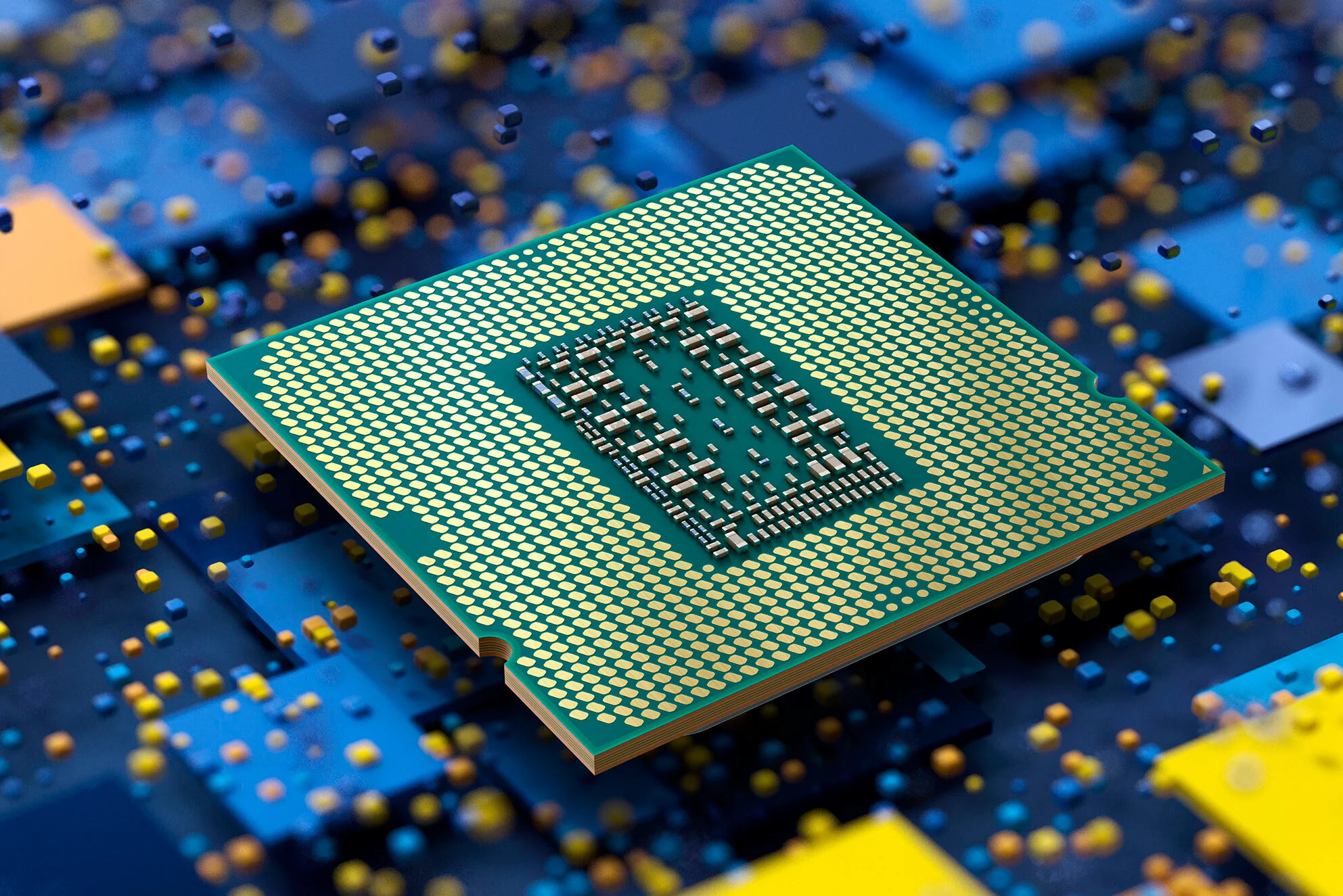Introduction
In the ever-evolving landscape of technology, one component stands at the heart of every computing device – the Central Processing Unit (CPU). As the digital world races towards unprecedented levels of speed and performance, the fluctuating prices of CPUs have caught the attention of both tech enthusiasts and investors alike. In this intriguing exploration, we delve into the dynamic realm of CPU price, examining its intricate relationship with technological advancements and its potential impact on investment decisions.
With each passing year, CPUs are becoming faster and more powerful, pushing the boundaries of what was once thought possible. As Moore’s Law continues to drive innovation, the relentless pursuit of speed and efficiency has not only transformed our devices but has also opened up new avenues for financial opportunities. From gaming rigs to data centers, CPUs play a pivotal role in shaping the technological landscape, making them a compelling focal point for investors seeking to capitalize on the ever-accelerating digital revolution.
The complex factors influencing CPU price
The pricing of CPUs is influenced by a wide array of complex factors that interact with each other in intricate ways. These factors span technological, economic, geopolitical, and market-related aspects. Understanding the interplay of these factors is essential for grasping the dynamics behind CPU price fluctuations.
Technological Advancements:
As Moore’s Law continues to hold sway, the consistent progression of technology leads to the development of faster, more efficient, and powerful CPUs. New architectural designs, manufacturing processes, and innovations in materials can significantly impact the production costs of CPUs, thereby influencing their prices.
Supply and Demand Dynamics:
The balance between supply and demand is a fundamental driver of prices in any market. When demand for CPUs exceeds supply due to increased consumer interest, product launches, or unforeseen events like component shortages, prices tend to rise. Conversely, oversupply may lead to price drops.
Manufacturing Costs:
The cost of producing CPUs is a critical component in determining their prices. Advancements in manufacturing technologies can drive down production costs, potentially leading to price reductions for consumers.
Raw Materials and Component Costs:
The costs of raw materials, such as silicon wafers and other components, have a direct impact on the overall production cost of CPUs. Fluctuations in the prices of these materials can affect the final price of CPUs.
R&D Investments:
The research and development investments made by CPU manufacturers to create cutting-edge architectures and features can contribute to the pricing of their products. High R&D costs for advanced technologies may result in higher prices for newer CPUs.
Competition:
Intense competition among CPU manufacturers can lead to price wars and aggressive pricing strategies. Companies strive to offer better performance at competitive prices to attract customers, which can result in more affordable options for consumers.
Market Segmentation:
CPU manufacturers often segment their products into different tiers or categories to cater to various market segments. Premium CPUs with higher performance and features may command higher prices, while more budget-friendly options target cost-conscious consumers.
Geopolitical Factors:
Political stability and international trade relations can influence the supply chain and production costs of CPUs. Trade tariffs, export restrictions, and other geopolitical events can disrupt supply chains and lead to price fluctuations.
Consumer Trends:
Changes in consumer preferences and trends can drive shifts in demand for specific CPU types. For example, increased interest in gaming or data-intensive tasks can lead to higher demand for high-performance CPUs, affecting their prices.
Obsolescence:
The rapid pace of technological innovation can render older CPU models obsolete, leading to price reductions as manufacturers seek to clear inventory. This phenomenon is particularly evident when new generations of CPUs are released.
Economic Conditions:
Macroeconomic factors such as inflation, currency exchange rates, and consumer purchasing power can impact the affordability and demand for CPUs, thereby influencing their prices.
Environmental Regulations:
Increasing emphasis on environmental sustainability can lead to changes in manufacturing processes and materials, which can impact production costs and, subsequently, CPU prices.
How CPU manufacturers categorize and price their products
CPU manufacturers categorize and price their products based on a variety of factors, including performance, features, target audience, and market positioning. These categorizations help consumers make informed choices based on their needs and budgets.
Performance Tiers:
Manufacturers often offer CPUs in different performance tiers, ranging from entry-level to high-end. These tiers are usually associated with specific series or families of CPUs. For example, Intel’s Core i3, i5, i7, and i9 series represent different performance levels. AMD’s Ryzen CPUs are similarly categorized into Ryzen 3, 5, 7, and 9 series.
Core Count and Threads:
CPUs with varying numbers of cores and threads are designed to cater to different workloads. CPUs with more cores and threads generally offer better multitasking and performance for tasks that can utilize parallel processing. Higher core count CPUs often come at a premium price due to the increased manufacturing complexity.
Clock Speeds:
Clock speeds, measured in GHz (gigahertz), indicate how quickly a CPU can process instructions. Higher clock speeds generally result in better single-threaded performance. Manufacturers might price CPUs with higher clock speeds higher due to their better overall performance in certain applications.
Cache Size:
The amount of cache memory on a CPU impacts its ability to store frequently used data for quicker access. CPUs with larger cache sizes can offer improved performance in tasks that rely heavily on memory access. CPUs with larger caches might be priced higher.
Integrated Graphics:
Some CPUs come with integrated graphics processing units (GPUs), which can handle graphics tasks without the need for a separate graphics card. CPUs with integrated graphics are often more budget-friendly and cater to general computing tasks and light gaming.
Thermal Design Power (TDP):
TDP indicates the amount of heat a CPU generates under load and helps consumers choose a suitable cooling solution. Higher TDP CPUs might require more robust cooling solutions, which can impact the overall cost of building a system.
Market Positioning:
Manufacturers create product lines targeting specific market segments. Premium CPUs with advanced features and performance are positioned for enthusiasts, gamers, and professionals who demand high performance. Lower-tier CPUs are designed for mainstream consumers or budget-conscious users.
Specialized Features:
Some CPUs include specialized features such as unlocked multipliers for overclocking, support for virtualization technologies, and advanced security features. These features can justify higher prices for users who require them.
New Technologies and Architectures:
CPUs featuring the latest architectures, manufacturing processes, and technologies tend to be priced higher due to their improved performance and efficiency.
Competition and Market Trends:
Competition in the market can lead to price adjustments. If a competitor releases a competitive product at a lower price, manufacturers may adjust their prices accordingly to remain competitive.
Product Lifecycle:
As CPUs age and new generations are introduced, older models may be priced lower to clear inventory and make room for newer offerings.
How CPU prices impact user experiences and outcomes
CPU prices have a significant impact on user experiences and outcomes across a wide range of computing activities. The price of a CPU can influence the performance, responsiveness, and capabilities of a computer system, which in turn affects how users interact with technology and achieve their goals.
Performance and Speed:
Higher-priced CPUs often come with better performance, including faster clock speeds, more cores, and larger cache sizes. This directly translates to quicker processing of tasks, smoother multitasking, and improved overall system responsiveness. Users with higher-performance CPUs can enjoy faster application load times, seamless multitasking, and smoother gaming experiences.
Multitasking and Productivity:
CPUs with multiple cores and threads enable efficient multitasking by allowing the computer to handle multiple tasks simultaneously. Higher-priced CPUs with more cores can handle resource-intensive applications, such as video editing, 3D rendering, and virtualization, more efficiently. This enhances productivity for professionals who require complex task handling.
Gaming Experience:
In gaming, CPU performance plays a crucial role, especially in games that rely heavily on CPU calculations. Higher-priced CPUs can provide smoother gaming experiences, higher frame rates, and better handling of physics simulations and artificial intelligence in games.
Content Creation and Creativity:
Creative professionals working with tasks like video editing, graphic design, and 3D modeling benefit from CPUs with higher performance. More powerful CPUs reduce rendering times, allow for smoother real-time previews, and accelerate complex computations, enabling faster content creation and more efficient workflows.
Software Compatibility:
Some software applications require a certain level of CPU performance to function optimally. Investing in a higher-priced CPU can ensure that software requiring substantial processing power performs well without lags or slowdowns.
Future-Proofing:
Investing in a higher-priced CPU can provide users with a longer window of relevance before needing an upgrade. As software and applications become more demanding over time, a more powerful CPU can extend the useful life of a computer system.
Virtualization and Emulation:
CPUs with advanced features, such as support for virtualization technologies, are essential for running multiple operating systems concurrently or emulating older hardware and software environments. Users who require these capabilities may opt for CPUs with higher price points.
Energy Efficiency:
Higher-priced CPUs often incorporate advanced power-saving features and improved energy efficiency. This can lead to lower power consumption and longer battery life in laptops and portable devices, enhancing the user experience by extending usage time.
Content Consumption:
While high-end CPUs are essential for content creation and complex tasks, everyday users who primarily consume content through web browsing, streaming, and light productivity tasks can achieve satisfactory performance with mid-range or budget CPUs.
Cost-Effectiveness:
Depending on the user’s needs, a more budget-friendly CPU might offer a better price-to-performance ratio. Users who prioritize cost-effectiveness can find CPUs that meet their requirements without overspending on unnecessary performance.
Conclusion
In the ever-evolving landscape of technology, the pricing of CPUs stands as a dynamic force that shapes not only the devices we use but also the investment decisions we make. The journey from basic computing to the cutting edge of innovation is marked by intricate factors that influence CPU prices and, in turn, impact user experiences and financial outcomes.
From the halls of research and development to the shelves of retail stores, the intricate dance of technological advancement and market dynamics gives birth to a myriad of CPU options, each tailored to specific needs and aspirations. Performance tiers, core counts, clock speeds, and specialized features form a symphony of choices that users navigate in pursuit of the perfect balance between power and affordability.
These choices, while seemingly individual, ripple through the broader fabric of technology-driven societies. A faster CPU can unlock new realms of productivity, enriching the work of professionals and the creativity of artists. For gamers, it can transform digital worlds into immersive experiences, fueled by speed and precision. And in the vast expanse of the internet, a CPU can be a gateway to knowledge, connection, and entertainment.




